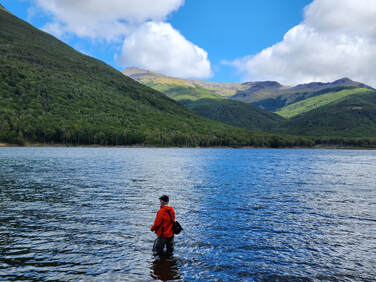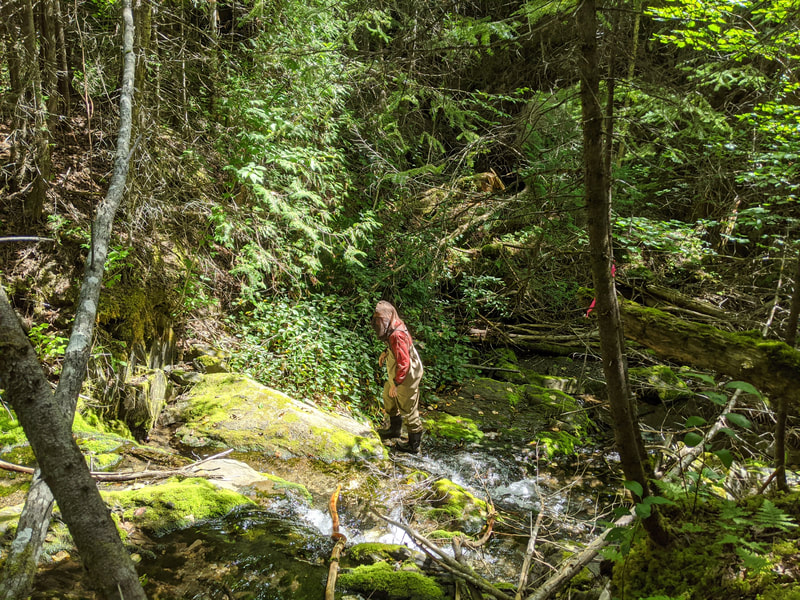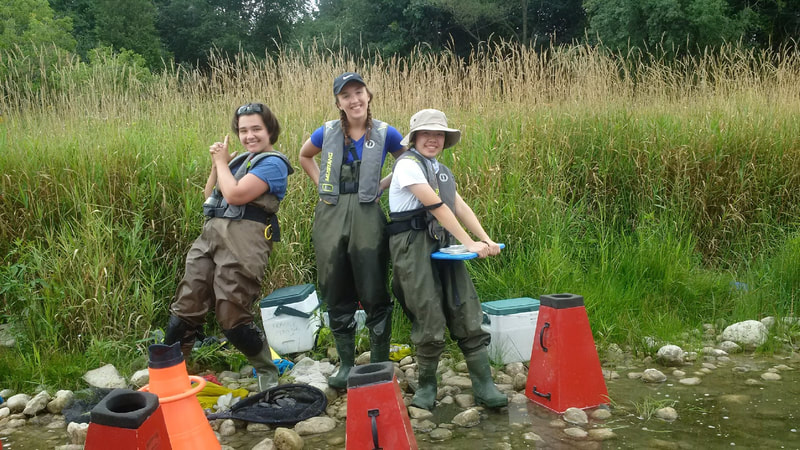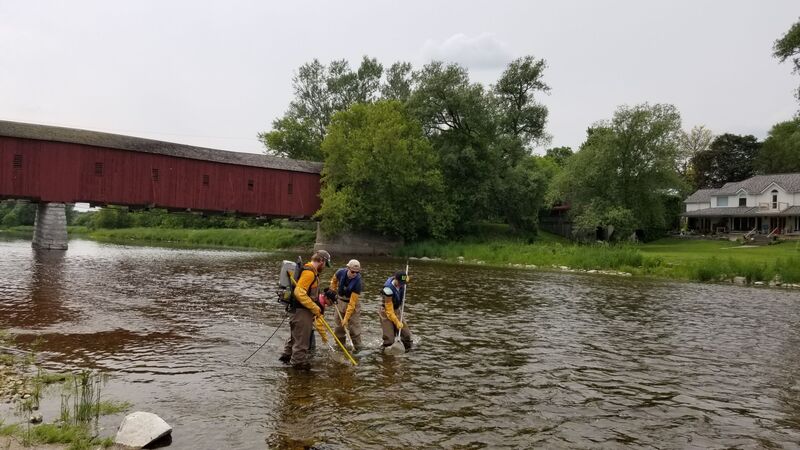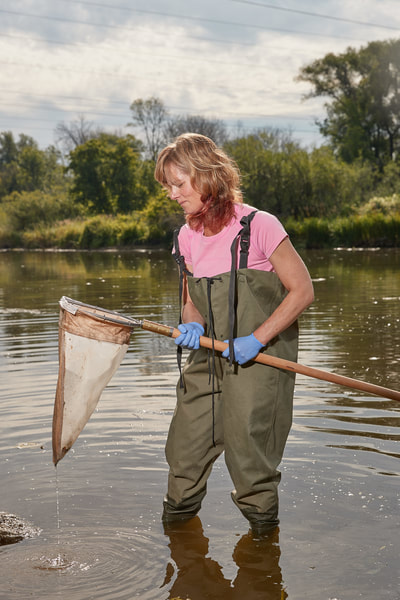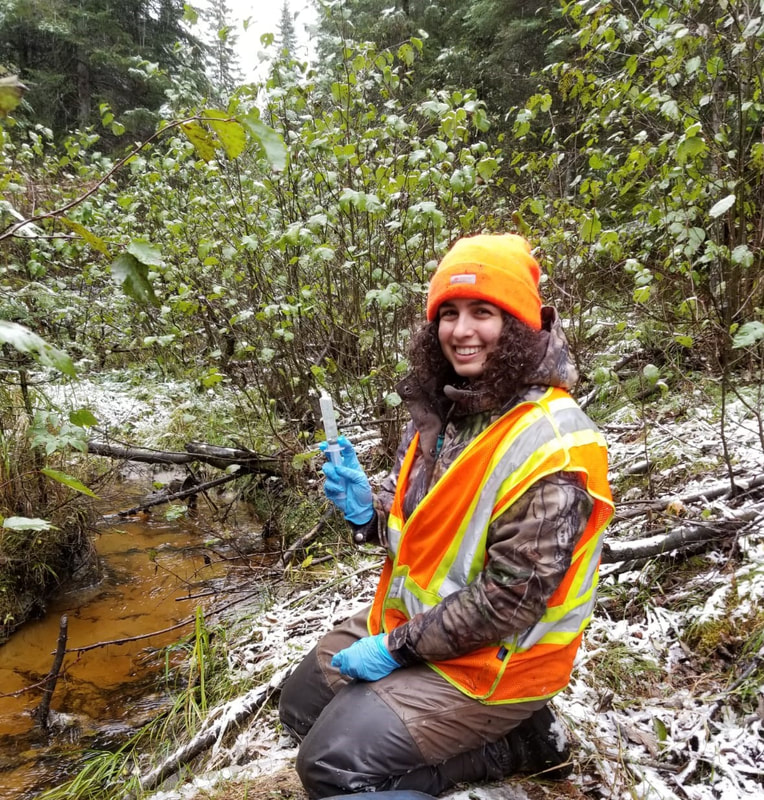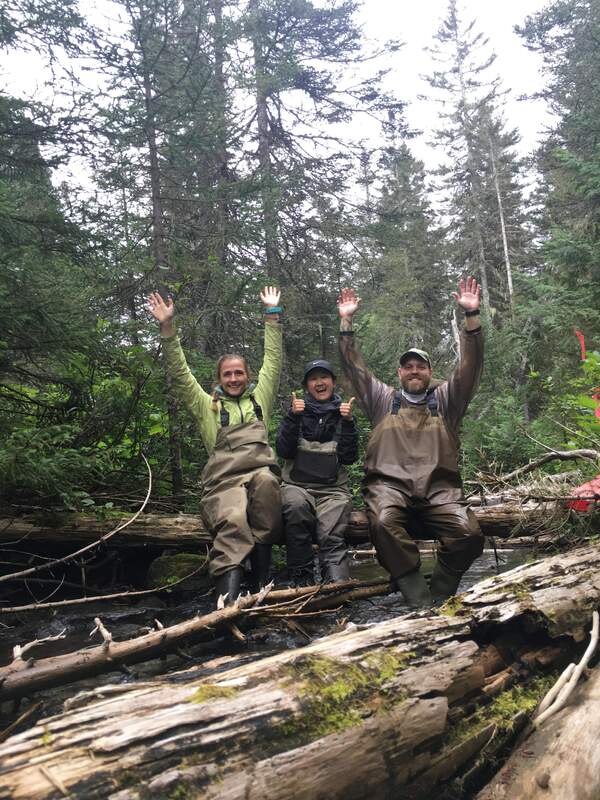Current and recent projects
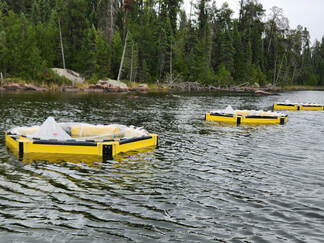 Mesocosm study - 2023
Mesocosm study - 2023
Effects of common disinfectants on aquatic food webs (new!)
Quaternary ammonium compounds are heavily used worldwide in cleaning and personal care products as they are highly effective biocides. They are commonly found in surface waters downstream of municipal wastewater treatment plants because they are resistant to breakdown. Lab studies have found that QACs are highly toxic to algae and aquatic invertebrates.
We are working at the fantastic IISD-Experimental Lakes area to understand how QACs are affecting aquatic ecosystems. This is a multi-year project that started in 2023 with a mesocosm study using a range of QAC concentrations. Stay tuned for some more updates!
Funding: NSERC Alliance grant and the Jarislowsky Foundation.
Quaternary ammonium compounds are heavily used worldwide in cleaning and personal care products as they are highly effective biocides. They are commonly found in surface waters downstream of municipal wastewater treatment plants because they are resistant to breakdown. Lab studies have found that QACs are highly toxic to algae and aquatic invertebrates.
We are working at the fantastic IISD-Experimental Lakes area to understand how QACs are affecting aquatic ecosystems. This is a multi-year project that started in 2023 with a mesocosm study using a range of QAC concentrations. Stay tuned for some more updates!
Funding: NSERC Alliance grant and the Jarislowsky Foundation.
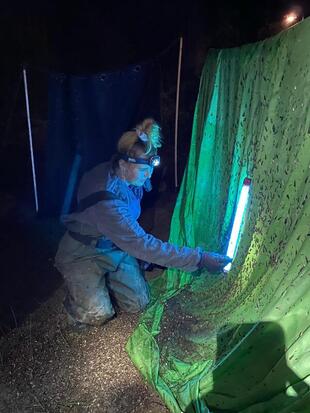
Assessing the impacts of municipal wastewaters on invertebrates, fish and riparian spiders
Check out the Story Map for our work on the Grand River!
Collectively, municipal wastewaters are the largest effluent discharge by volume in Canada and they contain diverse mixtures of nutrients, household chemicals, pharmaceuticals, personal care product additives, microplastics and microorganisms. Although municipal wastewater treatment is improving in Canada with new regulations and plant upgrades, species living downstream may be affected by these effluents.
We have several projects happening on the Grand River, southern Ontario, to understand whether aquatic insects (larvae and adults) and their predators, riparian spiders, have greater levels of pharmaceuticals, personal care product additives, and microplastics, and varied host microbiomes downstream of these discharges. We are also collaborating with Dr. Ryan Prosser's lab at the University of Guelph to do lab studies to understand the effects of microplastics on aquatic invertebrates.
Our team is also assessing how municipal wastewater effluents affect the host microbiomes of aquatic insect larvae, emergent adults and riparian spiders in the Bow River, southern Alberta in collaboration with Dr. Kelly Munkittrick at the University of Calgary.
Funding: These projects are being supported by an NSERC Discovery grant, NSERC Alliance grant, the Jarislowsky Foundation and the RBC Blue Water Foundation.
Check out the Story Map for our work on the Grand River!
Collectively, municipal wastewaters are the largest effluent discharge by volume in Canada and they contain diverse mixtures of nutrients, household chemicals, pharmaceuticals, personal care product additives, microplastics and microorganisms. Although municipal wastewater treatment is improving in Canada with new regulations and plant upgrades, species living downstream may be affected by these effluents.
We have several projects happening on the Grand River, southern Ontario, to understand whether aquatic insects (larvae and adults) and their predators, riparian spiders, have greater levels of pharmaceuticals, personal care product additives, and microplastics, and varied host microbiomes downstream of these discharges. We are also collaborating with Dr. Ryan Prosser's lab at the University of Guelph to do lab studies to understand the effects of microplastics on aquatic invertebrates.
Our team is also assessing how municipal wastewater effluents affect the host microbiomes of aquatic insect larvae, emergent adults and riparian spiders in the Bow River, southern Alberta in collaboration with Dr. Kelly Munkittrick at the University of Calgary.
Funding: These projects are being supported by an NSERC Discovery grant, NSERC Alliance grant, the Jarislowsky Foundation and the RBC Blue Water Foundation.
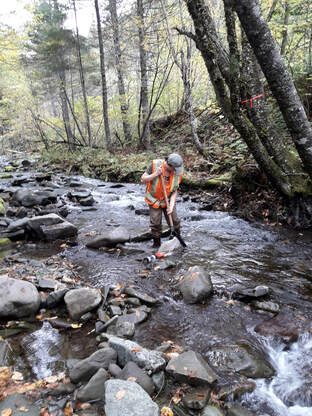
Impacts of forest management on streams and rivers
Nearly two-thirds of Canada’s land base is forested, and this forms the basis of one of Canada’s most important resource industries. However, forests are also key suppliers of aquatic ecosystem services (AES), such as serving as critical source areas for much of North America’s sustainable, clean water supplies.
Check out the Story Map for our forestry research
Understanding the local and cumulative effects of forest management activities on streams. We are examining the local and downstream changes in a suite of aquatic indicators across a gradient of forest disturbance in northern New Brunswick and in the Batchawana River, northern Ontario. These indicators include water quality, macroinvertebrate diversity, food web structure, sedimentation, dissolved organic matter quality, leaf litter decomposition, and mercury bioaccumulation and biomagnification.
Best management practices to reduce the mobilization and accumulation of mercury in stream food webs. This research is assessing the effects of different forest management practices on mercury concentrations in streams near Dryden, Ontario. It is being done in collaboration with forestry companies to understand the operations that are best for reducing the mobilization of mercury into streams and its uptake into the food web.
Effects of spruce budworm on stream ecosystems. This research is assessing the effects of an ongoing budworm outbreak in Gaspésie Peninsula, Québec, on carbon inputs and use, water quality and flow, microbial communities, and the bioaccumulation and trophic transfer of mercury through aquatic food webs. It is being done in collaboration with the Canadian Forest Service, University of New Brunswick, and Québec Ministère des Forêts, de la Faune et des Parcs.
Funding: Collectively, this research is supported by NSERC Strategic Network, Collaborative Research and Development (with JD Irving, Ltd.) and Strategic Project grants, by an Early Intervention Strategy grant, by the Jarislowsky Foundation, and by the Canadian Forest Service.
Nearly two-thirds of Canada’s land base is forested, and this forms the basis of one of Canada’s most important resource industries. However, forests are also key suppliers of aquatic ecosystem services (AES), such as serving as critical source areas for much of North America’s sustainable, clean water supplies.
Check out the Story Map for our forestry research
Understanding the local and cumulative effects of forest management activities on streams. We are examining the local and downstream changes in a suite of aquatic indicators across a gradient of forest disturbance in northern New Brunswick and in the Batchawana River, northern Ontario. These indicators include water quality, macroinvertebrate diversity, food web structure, sedimentation, dissolved organic matter quality, leaf litter decomposition, and mercury bioaccumulation and biomagnification.
Best management practices to reduce the mobilization and accumulation of mercury in stream food webs. This research is assessing the effects of different forest management practices on mercury concentrations in streams near Dryden, Ontario. It is being done in collaboration with forestry companies to understand the operations that are best for reducing the mobilization of mercury into streams and its uptake into the food web.
Effects of spruce budworm on stream ecosystems. This research is assessing the effects of an ongoing budworm outbreak in Gaspésie Peninsula, Québec, on carbon inputs and use, water quality and flow, microbial communities, and the bioaccumulation and trophic transfer of mercury through aquatic food webs. It is being done in collaboration with the Canadian Forest Service, University of New Brunswick, and Québec Ministère des Forêts, de la Faune et des Parcs.
Funding: Collectively, this research is supported by NSERC Strategic Network, Collaborative Research and Development (with JD Irving, Ltd.) and Strategic Project grants, by an Early Intervention Strategy grant, by the Jarislowsky Foundation, and by the Canadian Forest Service.
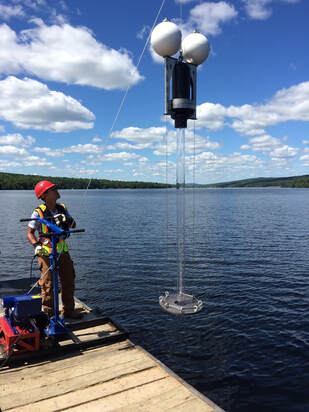
Mactaquac Aquatic Ecosystem Study
The Mactaquac Aquatic Ecosystem Study (MAES) is assessing the Saint John River ecosystem and the potential implications of removal of the Mactaquac Dam upstream of Fredericton, New Brunswick, Canada. As part of this multi-disciplinary, multi-institutional project we are characterizing the structure of the riverine food web and the contemporary and historical concentrations of metals, hydrocarbons and chlorinated organics (e.g. PCBs) in the sediments of the headpond. We are also measuring the levels of mercury in fish in this ecosystem. These results will be used to support the decisions around dam removal or refurbishment.
Check out the Story Map for the MAES project!
Funding: This project is funded by NB Power and by an NSERC CRD Grant.
The Mactaquac Aquatic Ecosystem Study (MAES) is assessing the Saint John River ecosystem and the potential implications of removal of the Mactaquac Dam upstream of Fredericton, New Brunswick, Canada. As part of this multi-disciplinary, multi-institutional project we are characterizing the structure of the riverine food web and the contemporary and historical concentrations of metals, hydrocarbons and chlorinated organics (e.g. PCBs) in the sediments of the headpond. We are also measuring the levels of mercury in fish in this ecosystem. These results will be used to support the decisions around dam removal or refurbishment.
Check out the Story Map for the MAES project!
Funding: This project is funded by NB Power and by an NSERC CRD Grant.
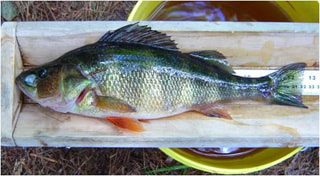
Accumulation of pollutants through food webs
Some environmental pollutants can concentrate up through food webs to levels in fish that can affect the health of the fish themselves or the fish-eating wildlife and humans.
Even in remote systems with no human activities, mercury and other contaminants can be high in fish. We have several projects to understand how contaminants are accumulated through lake, river and coastal food webs into top predators.
In Nova Scotia we worked in Kejimkujik National Park, an area known as a biological mercury hotspot. We were studying how mercury moves through the food webs of these acidic lakes and whether it was affecting the health of the fish.
In Norway we worked with researchers at the Norwegian Institute for Water Research (NIVA) to assess how climate change (using a latitudinal gradient) affects mercury in lake food webs.
In Chilean Patagonia in Tierra del Fuego, we are contrasting the fate of mercury in river, wetland and lake ecosystems in collaboration with Dr. Gustavo Chiang at the Universidad Andrés Bello.
Funding: These projects are being supported by an NSERC Discovery Grant, the Jarislowsky Foundation, Environment and Climate Change Canada, Parks Canada, the Wildlife Conservation Society, and the Norwegian Institute for Water Research.
Some environmental pollutants can concentrate up through food webs to levels in fish that can affect the health of the fish themselves or the fish-eating wildlife and humans.
Even in remote systems with no human activities, mercury and other contaminants can be high in fish. We have several projects to understand how contaminants are accumulated through lake, river and coastal food webs into top predators.
In Nova Scotia we worked in Kejimkujik National Park, an area known as a biological mercury hotspot. We were studying how mercury moves through the food webs of these acidic lakes and whether it was affecting the health of the fish.
In Norway we worked with researchers at the Norwegian Institute for Water Research (NIVA) to assess how climate change (using a latitudinal gradient) affects mercury in lake food webs.
In Chilean Patagonia in Tierra del Fuego, we are contrasting the fate of mercury in river, wetland and lake ecosystems in collaboration with Dr. Gustavo Chiang at the Universidad Andrés Bello.
Funding: These projects are being supported by an NSERC Discovery Grant, the Jarislowsky Foundation, Environment and Climate Change Canada, Parks Canada, the Wildlife Conservation Society, and the Norwegian Institute for Water Research.
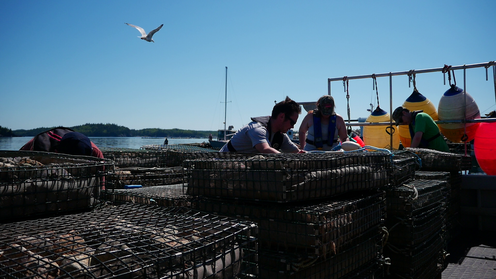
Salmon Aquaculture in the Bay of Fundy
Aquaculture operations are known to introduce excess nutrients from feed and feces and some contaminants like metals into the sediments near the cages. However, most of our understanding of the impacts of aquaculture are on the soft sediments and organisms that live therein. Here we are using rock baskets (bio-collectors) to collect different species that live on rocky habitats and comparing their dietary habits (using stable isotopes) and metal levels at sites near to and away from active salmon pens in the Bay of Fundy, New Brunswick.
Funding: This research is supported by Environment and Climate Change Canada.
Aquaculture operations are known to introduce excess nutrients from feed and feces and some contaminants like metals into the sediments near the cages. However, most of our understanding of the impacts of aquaculture are on the soft sediments and organisms that live therein. Here we are using rock baskets (bio-collectors) to collect different species that live on rocky habitats and comparing their dietary habits (using stable isotopes) and metal levels at sites near to and away from active salmon pens in the Bay of Fundy, New Brunswick.
Funding: This research is supported by Environment and Climate Change Canada.
